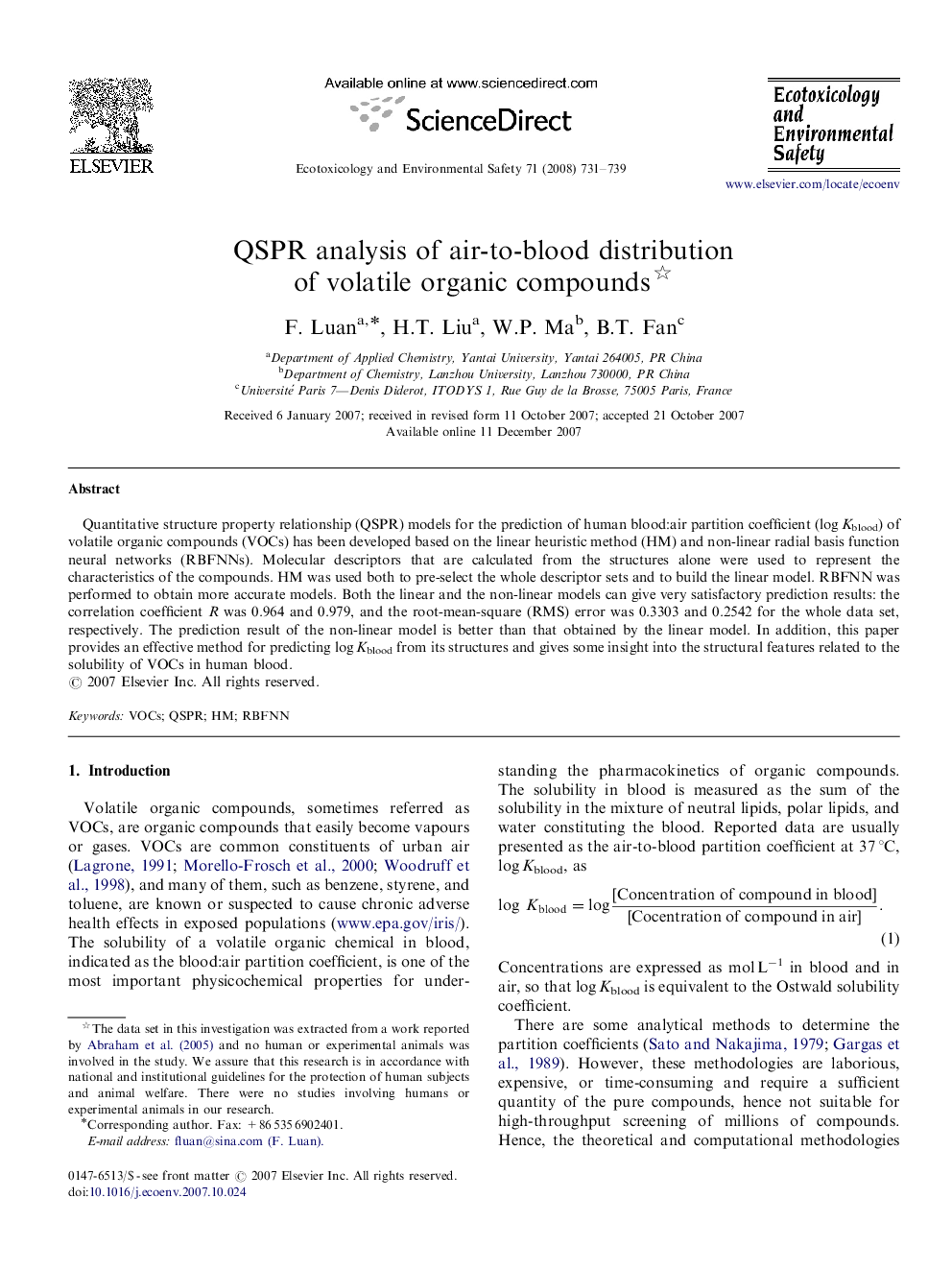| Article ID | Journal | Published Year | Pages | File Type |
|---|---|---|---|---|
| 4421809 | Ecotoxicology and Environmental Safety | 2008 | 9 Pages |
Quantitative structure property relationship (QSPR) models for the prediction of human blood:air partition coefficient (log Kblood) of volatile organic compounds (VOCs) has been developed based on the linear heuristic method (HM) and non-linear radial basis function neural networks (RBFNNs). Molecular descriptors that are calculated from the structures alone were used to represent the characteristics of the compounds. HM was used both to pre-select the whole descriptor sets and to build the linear model. RBFNN was performed to obtain more accurate models. Both the linear and the non-linear models can give very satisfactory prediction results: the correlation coefficient R was 0.964 and 0.979, and the root-mean-square (RMS) error was 0.3303 and 0.2542 for the whole data set, respectively. The prediction result of the non-linear model is better than that obtained by the linear model. In addition, this paper provides an effective method for predicting log Kblood from its structures and gives some insight into the structural features related to the solubility of VOCs in human blood.
